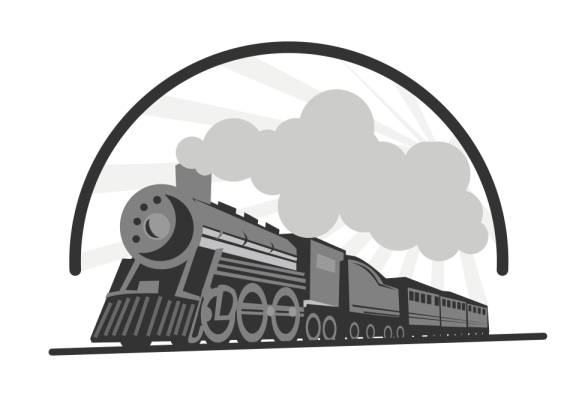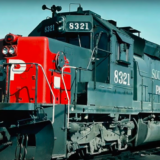Fallen Flags Afterlife
Back in the day, when a railroad merged with another, the new parent would often leave the existing livery intact, with perhaps the exception of either changing the unit number, or perhaps adding lettering to the cab or locomotive body. As an example, when the Burlington Northern and Santa Fe merged and became the Burlington Northern Santa Fe, units from both entities continued operating in their original colors until such time as maintenance provided an opportunity to repaint the unit.
In certain situations, locomotives have avoided the paint shop for more than 25 years. Today, there are only a handful of Southern Pacific engines that remain in SP paint. But for the first decade after the 1996 acquisition of SP by the Union Pacific, it was common to see grey and scarlett tunnel motors lashed up to modern UP yellow liveried engines.

Legacy Honors
A number of railroads have, on occasion, recognized the value of the brand they consumed, and as a matter of history, respect, and certainly supporting railfans everywhere, repainted one or more of their units in legacy colors. Often, the pain schemes are a variation on the original theme, and are called “commenorative” paint schemes.
This is different from maintaining heritage units, such as the Union Pacific has done with it’s steam and diesel locomotives. Some of them are magnificent as well – the UP E-9s, Centennials, and the 4014 Big Boy steam powered monster to name just a few.
As one case in point, the Union Pacific has created at least 16 locomotives in commemorative colors. Some of the roads represented include Chicago & North Western, Missouri-Kansas-Texas (KATY), Denver and Rio Grande, and of source, the Southern Pacific.
The Afterlife
In other situations, smaller railroads have purchased units from larger operators, either when they were still in operation, or when the company closed up shop and sold off assets. There are more than 100 of these small railroads, some operating for a few miles, and some covering more than a thousand miles of rail.
In Indiana, the Napoleon Defiance and Western Railroad still operates several Santa Fe GP20s. Here’s a link to a video of the EMD unit switching near Woodburn, Indiana. The line is 53 miles long. The RailroadFan website has a great listing of all motive power, and you can easily see where these diesels originated. Some are more than 60 years old.
The Trona Railroad in the Mojave desert is another example of a railroad using fallen flags equipment. It operates from Trona to a Union Pacific interchange at Searles, California. The TRC is often referred to as the “home of the tunnel motors,” as they continue to operate ex-Southern Pacific power, including SD45-T tunnel motor locomotives.
A Dull Future
If you’re a fan of a fallen flag line, it’s pretty exciting to see a rain headed by a locomotive you thought was long gone. Because these short lines are often profitable, it’s likely many of these older representatives of fallen flags will continue to operate, with dull, faded, or even partially painted over logos.




